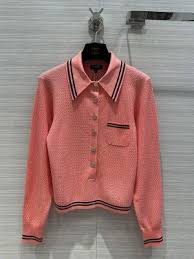Are replica clothing items worth the investment is a loaded question because it involves various factors such as use, quality assurance effect on career and personality. Because of this, many people will usually go for the less expensive route and that is where replica clothing comes in — as an affordable alternative to a heavier brand. That said, a number of things point to the savings not being worth writing home about.
One of the biggest issues with replica clothing is the build and fabric quality. Although replicas can copy the appearance of what is designer, they do not inject any sense into its structure. A 2022 study found that more than two-thirds of people who bought counterfeit clothing received garments with fabric problems such as pilling, fading and fraying from a single wash. This is not true as with genuine designer clothing, usually the materials used are of a much higher quality which will enable your clothes to be live longer. Although replicas are seemingly cheap upfront, their lower durability can lead to higher prices in the long term from frequently purchasing new items.
Replica clothing also struggles with fit-related problems. The designers of true clothes put a lot of time and money into assuring their clothing fits properly, looks good on the wearing etc. Replica manufacturers, on the other hand tend to cheat their way around this and as a result you get unmatching sizes of clothes. This can result in a feeling of dissonance with the purchase as clothes that do not fit you well work to make you look less attractive, but also feel uncomfortable against your skin. A poor-fitting copy could see little to no wear, which in-turn lessens the net benefit of that purchase.
Moreover, the value of replica clothing is further complicated by ethical considerations. Replica production is often recognized for its use of unethical labor — operations that typically involve paying workers extremely low wages, forcing them to work out of dangerous and exploitative conditions. On occasion, the fashion industry has become embroiled in high-profile labor rights abuses perpetrated on factories producing counterfeit goods. When consumers buy counterfeit clothing, they might inadvertently be supporting the antithesis of this which is ethically produced and sustainable fashion.

This chart also takes into account legal risks. It is sometimes legal for consumers to purchase and even own replica clothing given that the items are produced in a country without copyright laws or are imported for personal use. For context, in 2021 a large operation cracking down on counterfeits taking place within the European Union saw thousands of replica products seized — it puts into perspective how purchasing can lead to legal consequences. Violating consumers could face fines and or legal action for importing counterfeits, further eroding the value of these goods.
Eco-wise, replica clothes poison the fast fashion waters — one of the most-polluting and wasteful sectors in retail. Low cost, throwaway fashion is produced with massive water and energy footprints (backed up by millions of tones of raw materials) which are incredibly damaging to the planet. The fashion industry is responsible for 10% of the global carbon emissions, much of it from cheap clothes that we buy but end up throwing into landfill. Given that this unsustainable expectation is upheld with the use of replica clothing, it does not make for an appealing option to environmentally conscious consumers.
As the great fashion designer Tom Ford said, “Quality is remembered long after price is forgotten.” This is the core feeling which highlights why investing in original, quality garments could be more beneficial in parallel. While genuine designer goods can be pricier initially, they are frequently made with the best quality workmanship and materials to keep going for a considerable length of time – meaning that your expenses up front will ultimately pay off when you recoup at least some share of the original cost years from now thanks to their investment in value.
In the end, as tempting as those savings can be – from questionable quality and bad fit to ethical considerations and outright legal issues — replica clothing just may not add up in terms of what you get for what you pay. All of this should be factored in before consumers make a purchase. If you're looking to explore options such as ethically-made or vintage genuine items, it's worth researching a designer. Some additional details on the subject are available from replica clothing.
